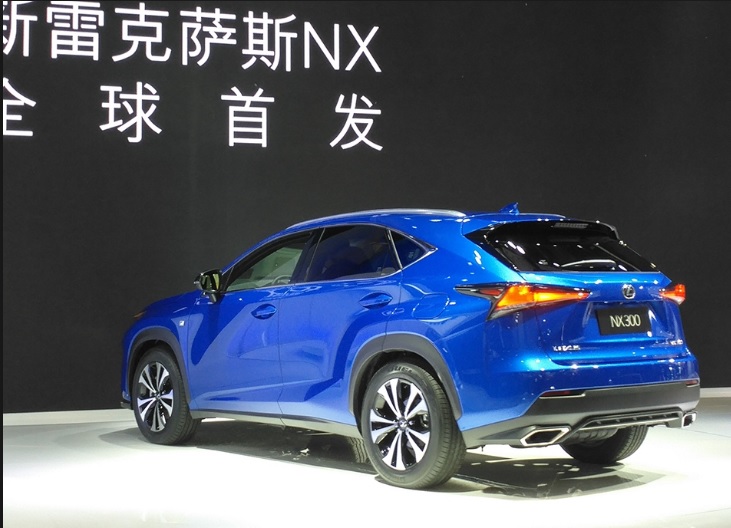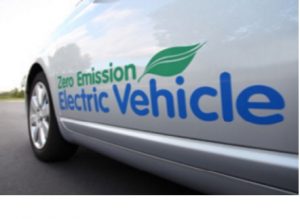 Auto Shanghai 2017 has been full of “new energy vehicle” announcements for the Chinese market from major and startup automakers. General Motors has plans to launch 10 all-electric and plug-in hybrid models by 2020. Ford, Volkswagen, and Nissan, all have aggressive plans for the market. Chinese startup NextEV displayed 11 vehicle concepts from its all-electric NIO brand.
Auto Shanghai 2017 has been full of “new energy vehicle” announcements for the Chinese market from major and startup automakers. General Motors has plans to launch 10 all-electric and plug-in hybrid models by 2020. Ford, Volkswagen, and Nissan, all have aggressive plans for the market. Chinese startup NextEV displayed 11 vehicle concepts from its all-electric NIO brand.
Behind all of it is the top global market for plug-in electrified vehicle sales and proposed government mandates for increasing those sales. China is interested in following California’s zero emission vehicle (ZEV) structure mandating an even higher percentage of sales to hit these targets with a credit trading scheme backing it up. But how realistic is it for China to meet its mandates – and for California?
China’s Ministry of Industry and Information Technology proposed last fall that ZEVs represent 8% of new vehicle sales as soon as 2018, and that would go up to 12% by 2020. Included in those numbers would be all-electric, plug-in hybrid, and fuel cell vehicles covering light, medium, and heavy duty vehicles. That includes all new cars, trucks, and buses sold in the country.
Companies that fail to meet the 8% requirement would face fines or have to buy credits from those that exceeded the minimum. That percentage score comes from weighted averages assigned to various zero- and low-emission vehicles. As in California, automakers that fail to meet the requirement face fines or have to buy credits from those that exceeded the minimum.
Average production of new energy vehicles last year may have contributed only about 3% of the score required, 5 percentage points short of the proposed 2018 target, according to the China Association of Automobile Manufacturers.
During 2016, there were about 507,000 new energy vehicles sold in China. As for total new vehicles sold in the country, there were about 28.03 million sold. As for the percentage of sales, NEVs accounted for about 1.8% of new vehicles sold; the government’s weighted averages brought it up to 3% in the scoring system.
China is considering blocking or delaying these proposed measures after industry feedback concluded that the targets are overly ambitious. It may be finalized by May or June, according to a government official.
Automakers are backing China’s goals, but are feeling a lot of anxiety about getting anywhere near close to selling 8% of total sales as ZEVs by 2018 – even if credit trading and a flexible point system helps ease the burden.
For those consumers and fleets making vehicle purchases in China, large sedans and SUVs are quite attractive. Many of these consumers are experiencing their first-ever high incomes, and are supporting China’s economic growth by spending a lot of it on vehicles, housing, mobile devices, entertainment, travel, and personal investments.
For now, buying vehicles that consume a lot of fossil fuel is just fine with car shoppers. A clear example of this is that first quarter 2017 SUV sales soared 21% from a year earlier to 2.4 million in China, while electric vehicle purchases declined 4.4% to just 55,929, reports Associated Press. Incentives were down on NEVs after the first of the year, which was thought to have an impact on NEV sales. If the current rate continues, it could finish the year below last year’s 507,000 plug-in vehicles sold.
Last year, California saw 62,166 plug-in electrified vehicles sold. Overall, the state had 2.1 million in new vehicle sales, with PEVs making up about 2.96% of total sales.
California Governor Jerry Brown’s ZEV goal is for the state to have 1.5 million ZEVs on its roads by 2025. That means about 15% of new vehicle purchases will need by to be ZEVs by 2025, or about 12% of sales higher than where it is now.
Commercial vehicles, such as medium- and heavy duty trucks, vans, and buses, are included in California’s ZEV sales data, similar to China. Both governments also include hydrogen fuel cell vehicles in those totals. Those sales volumes are quite small, but California is still leading the way on fuel cell vehicles and fueling stations. China has yet to see any fuel cell vehicle sales, though Toyota and other automakers plan to enter that fuel cell market.
China’s national government has been cracking down on vehicle manufacturers committing fraud in their NEV production and sales numbers to tap into generous government subsidies. That’s always been a concern for advocates of emission reduction targets around the world – that subsidies could be a scam and that credit trading can water down the end goals of the mandates.
China and the European Union are expected to keep strict mandates in place for the sale of ZEVs in those markets. The U.S. is expected to soften fuel economy and emissions rules under the Trump administration, though some analysts expect that consumers and fleets will increase demand in fuel efficient vehicles and that the nation’s current level of about 1% of new vehicle sales going to PEVs will be seeing an increase soon.
Most of the studies on ZEV goals being met point to a few recommendations:
- Staying with subsidies including low-interest loans and rebates to vehicle manufacturers, and rebates and tax incentives available to consumers and fleets. These will need to be supported by cash-back incentives and finance programs from OEMs sometimes tied to dealer programs.
- Continuing to bring down acquisition cost by making the battery packs and electric drives more affordable and cost competitive.
- Increasing the range of all-electric, plug-in hybrid, and fuel cell vehicles.
- Speeding up charging time through faster charges and an infrastructure spreading through workplaces, public chargers, homes, and multi-unit dwellings.
- Wireless charging is also raising hopes for wide adoption of PEVs.
- Adding more hydrogen fueling stations.
- Seeing more diversified and attractive offerings in plug-in and fuel cell vehicle launches for both passenger and commercial vehicles.
- Globalizing new vehicle launches for efficiency and sales growth – with variations built in by automakers based on government regulations, left- or right-side steering wheels and pedals, types of electric outlets in each country, and consumer and fleet expectations.
- Public awareness and education programs tied to larger greenhouse gas emissions reduction targets including ride and drive events, public chargers and hydrogen stations, and powering PEVs and fuel cell vehicles through renewable energy sources.

 ZEV credits: The California Air Resources Board may plan this week for the state’s emissions targets to remain largely unchanged through 2025 and then jump after that year, according to three people familiar with the proceedings. This will disappoint Tesla CEO Elon Musk and environmental groups that have called for expansion of the zero emission vehicle incentives. Tesla sold 80,227 credits during the 11 months through August, which accounted for 86% of the total. And even at prices below what Musk wants, the sales helped Tesla report a profit in the third quarter after having sold $139 million worth of ZEV credits during that quarter.
ZEV credits: The California Air Resources Board may plan this week for the state’s emissions targets to remain largely unchanged through 2025 and then jump after that year, according to three people familiar with the proceedings. This will disappoint Tesla CEO Elon Musk and environmental groups that have called for expansion of the zero emission vehicle incentives. Tesla sold 80,227 credits during the 11 months through August, which accounted for 86% of the total. And even at prices below what Musk wants, the sales helped Tesla report a profit in the third quarter after having sold $139 million worth of ZEV credits during that quarter.